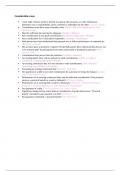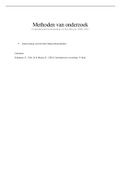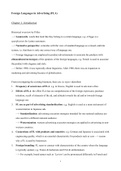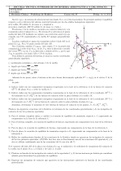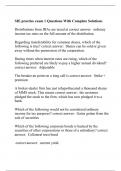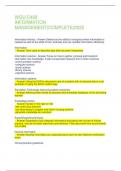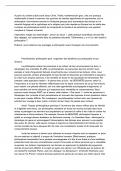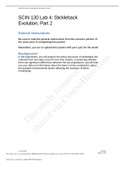Prospect theory 2 ways of goal framing that both promote healthy behavior:
Assumes that people’s risk preferences are sensitive to
information framing and that these preferences influence Gain framed arguments:
attitudes towards risk behavior. People can have 2 preferences: Emphasize benefits of taking action / the avoidance of
(1) Risk averse preference (avoiding risk) when considering unfavorable outcomes. Focus is on (1) good things that will
potential gains of a decision happen, (2) bad things that will not happen
(2) Risk seeking preference (willingness to take risk) when
considering potential losses of a decision Loss framed arguments:
Gains are more preferred for low-risk behaviors (low risk of Emphasize costs of failing to take action. Focus on (1) bad
unpleasant outcome). Losses are more preferred for risky things that will happen, (2) good things that will not happen.
behavior (higher risk of unpleasant outcome).
What are the parameters for use of this method? Name an alternative method and describe its
(1) Type of behavior: central elements:
Preventive: use gain frame
Detection: use loss frame
How someone feels about a behavior (beliefs, not behavior itself):
Method: Affective or cognitive arguments
(2) Risk implications (about negative outcome)
perceived as low risk behaviors / certain outcome: gain frame Gain and loss framed Processing of arguments: ELM
perceived as high risk behaviors / uncertain outcome: loss frame
(3) Dispositional approach/avoidance focus: arguments
Motivated by avoiding unfavorable outcome: Loss frame
Motivated by seeking favorable outcome: Gain frame
(4) Issue involvement
High: loss frame
Low: Gain frame
(5) Self-efficacy
High: Gain frame
Low: Loss frame Give a brief description of a practical application
(6) Orientation and take the parameters for use into account
Promotion oriented: Gain frame Case vitamin D:
Prevention oriented: Loss frame
Gain framed message about vitamin D, since it is a preventive
behavior. Approach focus, so focus on the favorable outcome. It’s
Why do you choose this method over the a promotion of a healthy behavior (so promotion oriented).
alternative method? Take the target groups and Example:
Preserve your muscle strength by taking Vitamin D. Lift your
type of intervention into account
grandchildren till eternity!
Emphasizes the good things that will happen: preserved
muscle strength and being able to lift your grandchildren.
, From which theory(s) is the method derived? What are the core elements of the method?
Attitude theory: Attitudes contain a cognitive and affective part
affect and cognition are building blocks of attitude Cognitive arguments:
Rational assessment. Based on instrumental beliefs,
individuals may respond differently to affective and facts, appealing on your thinking. (e.g. harmful, bad,
cognitive messages unhealthy, safe, dangerous)
Persuasive messages induce more attitude change Affective arguments:
when arguments match the affective/cognitive Emotional assessment. Based on experiental beliefs,
content of the person’s attitude emotions, feelings. (e.g. happy, pleasant, stressful,
worrying, fearful).
What are the parameters for use of this method? Name an alternative method and describe its
(1) Need for cognition / affect central elements
High need for cognition: use cognitive
arguments Method: Gain and loss framed arguments
High need for affect: use affective Cognitive and affective Processing of arguments: ELM
arguments
(2) Attitudinal base arguments
-base will lead to higher
appreciation.
Mis-matching structural base will lead to
attitude change
Give a brief description of a practical application and take the
Why do you choose this method over the
parameters for use into account
alternative method? Take the target groups and
Case vitamin D:
type of intervention into account
Start with a questionnaire to measure the structural base
Then, because of mixed evidence of matching and mis-matching,
you use both arguments.
In people with a more affective attitude, use more affective
arguments and some cognitive arguments.
In people with a more cognitive attitude, use more cognitive
arguments and some affective arguments.


